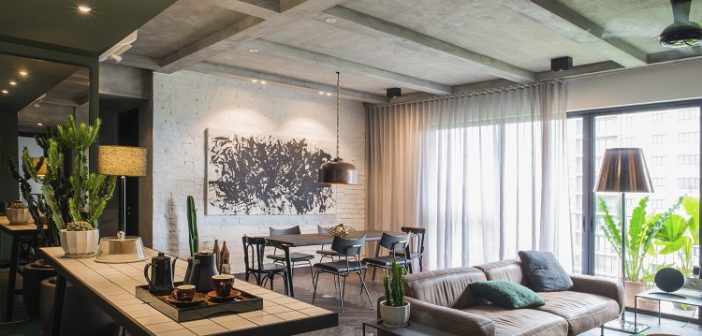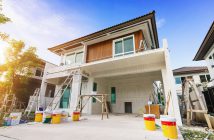Nearly 100 million seniors will populate the United States by the year 2060. That growing number makes it increasingly likely that you have been charged with the care of an elderly person you know or are working in an industry that requires you to care for aging clients.
In either case, knowing what poses the biggest threats to senior citizens is immensely important to your ability to manage your responsibilities.
Among the many tools that enable caretakers to work well with old people is adopting a home safety checklist for seniors. Home safety checklists allow you to put on paper everything that needs to be monitored regularly to give the person in your care the best chance of living a full life.
Curious to learn which items should go on your senior safety list? Keep reading to discover our picks!
1. Needed Products Are Within Reach
Requiring seniors to get up on step stools or extend themselves to reach needed items is a recipe for disaster. That’s why one of the top items that should go on your home safety checklist for seniors is that all necessary things are within reach.
Don’t assume that you can put products out of reach and that the person in your care will request help whenever they need something. This mistake happens time and again, leading to catastrophic results when seniors don’t want to impose, try something dangerous, and pay the consequences.
2. Communication Devices Are Available in Each Room
Unless you’re caring for a senior around the clock, they’ll need a way to reach out for help if anything bad happens while living alone. You might think to yourself that the phone the person in your care has in their bedroom will fulfill the need to communicate.
What would happen though if your senior were to become immobilized in another area of the house?
That possibility is why it’s important to have phones available in every room, a pager seniors can carry with them to ping for help, or some other solution that makes communication from anywhere a possibility.
3. A Welfare Check System Is in Place With Neighbors
This home safety checklist for seniors item does impose on others to a degree. If your senior lives in a community of supportive people though, we recommend seeing it through as it provides an additional layer of safety for your aging loved one or client.
Ask neighbors to check in on the senior you know 2 to 3 times per week. They can accomplish this via doing something as simple as bringing their mail to them.
By creating that point of connection, seniors will not only have brief opportunities to socialize regularly but will also feel safer and supported by those that live around them.
4. Fall Hazards are Removed
Falls are responsible directly for 25,000 senior deaths per year. With that in mind, you must regularly sweep senior’s homes for potential fall hazards. Where possible, remedy identified issues or call in help where needed (a contractor for example).
Cordoning off dangerous areas of the house or changing floors that could get slippery may mean the difference between life and death for the person in your care or an elderly parent refusing help.
5. Emergency Phone Numbers Are Accessible
Phone numbers to loved ones, non-emergency police lines, HOA maintenance staff, and other important parties should all be compiled on an easy-to-read list. That list should then be put in a place where seniors can find it.
Many people assume that seniors they’re caring for have numbers memorized. While that may be true today, memory can be fleeting with age which could turn an inconvenient situation into a dangerous one.
In addition to having a printed list of phone numbers, consider programming key numbers into the speed-dial of senior’s phones.
6. Smoke and Monoxide Detectors Are Working
Seniors have a lot of things on their minds. Chances are, regularly checking their smoke and monoxide detectors are not among them.
Make it a point that you or a neighbor checks all home detectors on a bi-weekly basis or so. This process takes seconds and like many other items on our list, saves lives.
7. Ample Lighting Is Present and Easy to Access
Expanding on our previous point of falls being catastrophic to seniors, among the many reasons why seniors fall, poor lighting is a primary driver. Fortunately, having ample lighting available in a senior’s home is as easy as installing brighter bulbs and/or putting in a couple of new light fixtures.
If you’re going the increasing light fixtures route, if at all possible, keep those fixtures off the floor. Adding floor lamps or tables to support table lamps all increase the risk of seniors tripping over new objects added to their home’s layout that they’re not used to.
Our Home Safety Checklist for Seniors Promotes Better Living
There’s nothing you can do that can make the senior you’re caring for as healthy and full of life as they may have been 30 years ago. By following the advice we’ve laid out via our home safety checklist for seniors though, you’re tackling simple solutions that support the elderly’s ability to mine the most out of their current existence.
What more can you ask for than that?
Working in elderly care is a noble calling that we wish you all the best with. If you need more guidance on senior care topics, know that you’re not alone and that we’re here to help.
We welcome you to keep reading content on our blog to continue fulfilling your need to know!





Most of these items should be in every home, because this is what will ensure the safety of you and your family. I advise you to learn more about wifi smoke detector here. The sensors are easy to maintain. They should be checked from time to time in the order specified in the instructions.
First of all, you need to check that the house is safe. You just have to check all communications, especially the wiring. A good electrician can help you with such tasks, who can make sure that everything is connected correctly and there are no problems with short circuits.